Snakeskin : A Study of Leather
Today, snakeskin is a must-have in high-end fashion.
High-heeled shoes, women's handbags, jackets, belts, ... The uses for this skin are countless.
Snakeskin 🐍 highly prized by fashion designers, leather goods and consumers, has established itself as a luxurious material. But also very expensive.
But like any material of animal origin, the craze around this skin hides an entire industry.
Between fashion trends 👠 and animal exploitation, welcome to the world of snakeskin leather.
1) Snakeskin, a Timeless Material
The resurrection of a trend from the 80s
It's impossible to be on social networks 📱, watch television or read the celebrity press today without coming across someone wearing snakeskin. It can be worn on all occasions and magnifies femininity.
Casual pants, mini skirts, skinny jeans, handbags or pairs of women's shoes made of snakeskin (or crocodile) were major trends in the 80s. As was leopard print. In recent years, we have been witnessing a resurrection of this past trend.
In fact, snakeskin was until then a rather classic material. Many people have a skirt or a mini bag made of this leather in their closet or dressing room. What makes snakeskin a trend at the moment is the fact that it has now been elevated to the forefront of fashion to accessorize an outfit. 👜
The Latest Trend Worn by the Stars
From Balenciaga's black python men's sneakers at €845 a pair, to Rihanna's new collection full trench coat, snakeskin is establishing itself as a real luxury trend in terms of shopping 🛍️. It’s hard to ignore when stars around the world are setting the example for matching it, particularly appreciating this high-end material in their glamorous outfits.
When Kylie Minogue was spotted with a $1,279 gold python Zagliani bag, the celebrity press was full of talk. The same goes for Kate Moss spotted with a snakeskin clutch over her shoulder, Desperate Housewives actress Eva Longoria with a $1,300 fringed python Prada bag, and Keira Knightley with Chanel python shoes.
Is snake skin considered leather?
Yes, snake skin is considered a type of exotic leather. It is processed and treated in a similar way to traditional leather, which is made from the hides of animals like cows, goats, or pigs. Snake skin leather is highly valued for its unique texture, pattern, and appearance, and it is commonly used in high-end fashion items like shoes, handbags, belts, wallets, and other accessories.
However, because snake skin is more delicate and harder to work with than traditional leather, it requires special care during tanning and maintenance. Additionally, trade in snake skin is often subject to regulations, especially for species that are endangered or protected under international laws like CITES (the Convention on International Trade in Endangered Species of Wild Fauna and Flora).
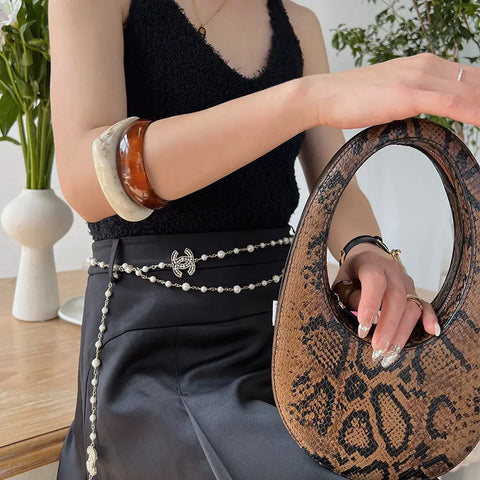
But why is snakeskin so expensive?
Although the snake pattern is everywhere, authentic snakeskin is rare. Genuine snakeskin fashion accessories such as handbags, small totes and other totes can fetch up to $15,000. Women's boots, sandals, and shoes made of real snakeskin cost an average of $2,000 💵.
Even fake snakeskin platform boots (python print on real leather) can go for up to $1,500. This makes this trend one of the most expensive in fashion right now.
People think that real snakeskin satchels, bags, and heels are expensive because they are durable, but that's not true ❌. These items are expensive because they are rare. That's what makes them luxury items.
The size of the snake also makes it difficult to make items larger than a small women's leather bag. Finally, this type of skin is delicate and with age the scales tend to naturally lift. The level of work required to assemble this fragile skin contributes to its high cost.
Snakeskin Boots: Most Wanted
The most popular snakeskin products tend to vary from season to season. This year, it was all about the fancy snakeskin heeled boot 👢. Every brand and major designer created their own snakeskin boot or high-top boot.
Real or fake, comfortable snakeskin boots with pointed toes reigned supreme this fall/winter season and will continue to make waves for the coming year in spring/summer.
Is snakeskin unethical?
Whether snakeskin is considered unethical depends on a number of factors, including personal values, ethical considerations, and the source of the snakeskin. Here are the main points of debate surrounding the ethics of using snakeskin:
1. Animal Welfare:
-
Ethical Concerns: Many people argue that using snakes for their skin is unethical due to the potential for cruelty in how the animals are killed and processed. If snakes are farmed or captured inhumanely, with poor living conditions or methods of killing, it raises significant ethical concerns.
-
Sustainable Alternatives: Some ethical fashion advocates promote alternatives to exotic leather, such as synthetic leather (faux snakeskin), which avoids harm to animals entirely.
2. Endangered Species:
-
Conservation Issues: Some species of snakes are endangered or threatened. Harvesting these animals for their skins can contribute to population declines. The trade in exotic skins is regulated by laws such as CITES to protect vulnerable species, but illegal poaching still occurs in some areas.
-
Regulated Trade: On the other hand, some argue that if snakeskin is sourced from farms or in accordance with conservation laws, it can be done sustainably. Legal, well-regulated trade is intended to prevent harm to wild populations.
3. Environmental Impact:
-
Negative Impact: The exotic leather trade can have harmful environmental impacts, including habitat destruction, over-harvesting of species, and pollution from the tanning process.
-
Sustainable Practices: Some companies are focusing on sustainable practices in sourcing and processing exotic leathers, ensuring that snakes are farmed and harvested in ways that minimize ecological damage.
4. Cultural and Historical Use:
-
Cultural Significance: In some cultures, using snakeskin has historical or cultural significance, and it may be seen as part of traditional practices. In such cases, the ethical view can vary depending on the cultural context.
5. Fashion Industry Demand:
-
Luxury and Status: Snakeskin is often used in luxury fashion items and is seen as a symbol of status. Some argue that this demand fuels unethical practices in farming and hunting snakes. Others believe that ethical sourcing through regulated farms can meet demand without harm to wild populations.
Personal Values and Alternatives:
-
Vegan/Animal Rights Perspective: Those who adhere to vegan or animal rights philosophies typically consider the use of snakeskin or any animal-derived material unethical, as it involves the exploitation of animals.
-
Synthetic Alternatives: With advancements in fashion technology, synthetic and cruelty-free alternatives to snakeskin are becoming more popular. These provide the look and texture of snakeskin without harming animals.
Whether snakeskin is ethical or not depends on factors like how the snakeskin is sourced, the impact on animal welfare, the conservation status of the species, and individual beliefs about the use of animal products. Many advocate for more ethical, sustainable, and cruelty-free alternatives to traditional snakeskin.
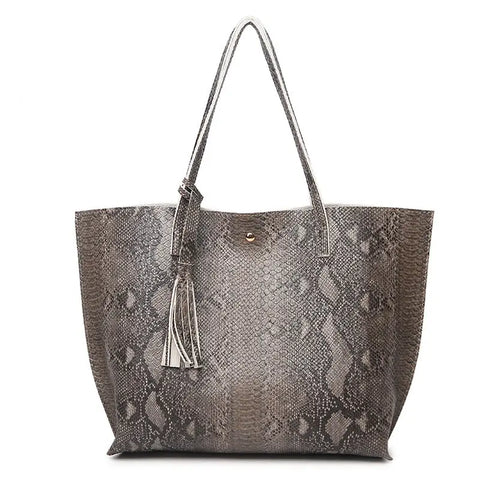
2) Real Leather vs. Faux Leather
How to Choose Between These Two Types of Leather?
The choice between real and faux depends on two main factors:
Cost is the number one factor, as most people are not willing to spend thousands of dollars on a red leather-lined bag that can't be worn every day 🤔. Like any exotic bag with luxurious finishes, it is more of a status symbol for most people.
On the other hand, many people think that it is not necessary to kill animals to dress and fill your wardrobe or cloakroom 🧥. This is why a large part of the population opts for fake snakeskin. Because the leather used is obtained as a by-product of food and animals are not (normally) killed simply for their skin.
Real Snakeskin
Real snakeskin products have a long lifespan. But the older the skin gets, the more the scales come out in relief. The techniques used to work the skin and to store these items properly, can slow down the aging process ✔️.
Some people do not like this feature, but this process is inevitable. On the contrary, people who love this exotic skin like it, and think that it adds beauty to the skin.
In any case, it is better to call on professional cleaners to give such an item a new lease of life.
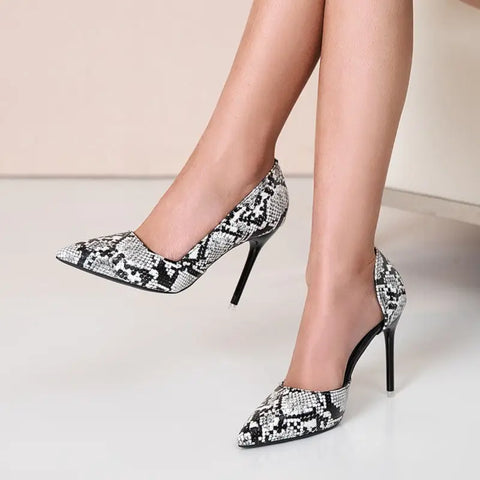
Faux Snake Leather: More Affordable or More Ethical?
Faux snakeskin products are usually made of cowhide, calfskin or goatskin. Then they are embossed ("printed") to resemble the scales of a snake and a varnish is applied to the leather 🖌️. The latter also serves to protect the leather, which makes the faux skin more durable and beautiful.
Faux snakeskin is not necessarily cheap. The price of faux snakeskin items is also determined by the material, the brand and the designer. Some pairs of faux snakeskin boots cost $1500, others $100. 😅
The type of patent leather and the methods used for printing affect the price. But in any case, the average person cannot distinguish between real and fake skin. So you might as well base your decision on the cut and style!
Is snake skin leather illegal?
Snake skin leather is not universally illegal, but its legality depends on several factors, including the species of snake, the country of origin, and the destination where the product is being sold or imported. Many countries regulate the trade of snake skin to ensure it is done sustainably and ethically, especially for species that are endangered or protected.
Key Factors That Affect Legality:
-
Species Protection Laws (CITES):
-
CITES (Convention on International Trade in Endangered Species) regulates the trade of many snake species that are considered vulnerable or endangered. Snake species like certain pythons, boas, and vipers may be listed under CITES, meaning their skins can only be traded if the necessary permits are obtained, ensuring that the trade does not harm the species' survival in the wild.
- For example, skins from the Burmese python or reticulated python are regulated, but not outright banned, provided they come from legal, sustainable sources.
-
Local Laws and Regulations:
- Some countries or regions have stricter regulations or outright bans on the trade and sale of exotic animal skins, including snake skin. For example, in California, the sale of python skins has been banned under state law since 1970, although other snake species' skins may be legal.
- Other countries, particularly those with significant wildlife populations, may ban the export of certain snake species to prevent poaching and protect wildlife.
-
Illegal Poaching and Smuggling:
- Illegal poaching of snakes for their skins still occurs, especially for high-demand luxury markets. Smuggled or illegally sourced snake skins are both unethical and illegal, and buying or selling them can result in serious legal consequences.
-
Legal Snake Farms:
- In some regions, snakes are farmed specifically for their skins, with the process regulated to ensure that it does not harm wild populations. Skins sourced from legal farms that comply with environmental and ethical standards are generally considered legal and can be traded internationally with the appropriate documentation.
Import/Export Regulations:
-
International Trade: Importing or exporting snake skin leather products across borders usually requires strict documentation, especially for species listed under CITES. Permits and certificates are required to prove that the skins were sourced legally and ethically.
-
Destination Country Laws: Even if the skin is legally sourced, the destination country may have specific rules about importing exotic leathers, so it's important to check local regulations.
Snake skin leather is legal in many places as long as it is sourced, traded, and sold in compliance with both international and local laws, especially those protecting endangered species. However, restrictions and bans exist for certain snake species, and it's crucial to ensure that any snake skin products you purchase or sell come from legal, ethical, and sustainable sources.
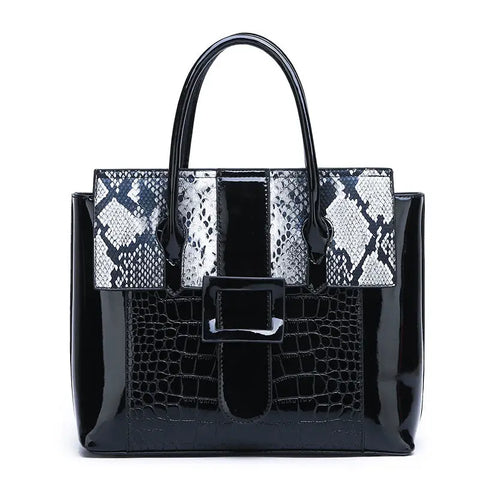
3) The Different Types of Snake Leather
Not all snake leathers are equal. Some are more prized than others depending on their pattern, strength, rarity, color or the morphology of the animal. 🐍
Here is the selection of the most commonly used snake leathers in the fashion world:
Python Leather
Python leather is the most common snake leather and the most used in leather goods. Python skin comes partly from breeding farms (see below). It has the particularity of having a brown surface large enough to produce medium-sized leather objects: bags 👜, ankle boots, boots, jackets, ...
The most expensive snakeskin bags are made of smooth python leather. With one small exception, however, for the cobra.
However, many species of python are now protected species, due to their intensive exploitation in the past.
Indian Cobra Leather
The Indian cobra (spectacled cobra, king cobra, Asian cobra or binocellate cobra) is a dangerous venomous snake. The spectacled cobra has this famous typical mark on the back of its head, reminiscent of the shape of glasses 👓.
The coloring of cobra skin is generally brownish or camel. Due to the distinctive mark of its collar, cobra leather was among the most expensive leathers on the market. Handbags made of cobra leather were then sold for thousands of euros each.
But following the Washington Convention on the Protection of Species, the trade in Indian cobras and products made with their skin was banned. Indeed, this text offers protection to animals classified as "rare" or "endangered". 👍
Anaconda Leather
Anacondas live in many regions of South America. 🌎 The giant anaconda is the largest snake in the world, but is not a protected species. When worked in the right way, the two-tone skin of the anaconda produces a very fashionable black leather for both women and men.
Rattlesnake Leather
Rattlesnake leather is also used in the manufacture of sandals, heels 👠, moccasins and other similar products. Its beige color tending towards khaki makes this snake leather one of a kind.
Even the rattle on the tip of its tail can be purchased.
Leather and Faux Leather with Snake Leather Embossing
Cow leather 🐮 and other types of leather can be embossed with different patterns. Synthetic leather (or two-material faux leather) can also be worked with a leather effect imitating snakeskin, as is the case on most of our items.
This process has the advantage of being able to dye the leather more easily to make it multi-colored, silver or metallic. Or even to embed rhinestones, sequins or pointed studs.
But it is not easy to imitate the reliefs of real snake leather. Good copies are very realistic, and only leather experts can recognize the difference 🔍. This is why they are so successful in women's fashion.
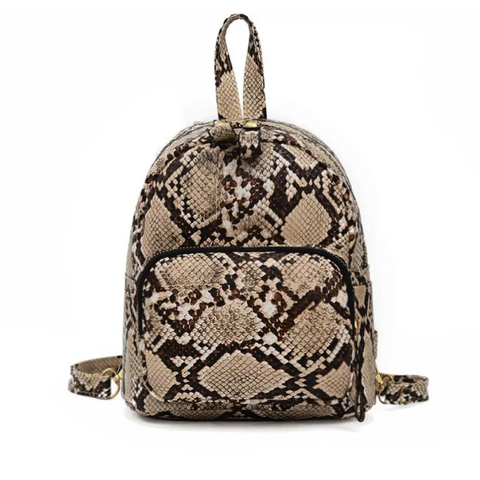
4) The Snake Skin Industry
Asian Producers
Indonesia is the largest exporter of snake skins in the world ✈️. But many Asian countries (Vietnam, Philippines, China, ...) also export their ophidian skins.
The Indonesian industry depends on its vast network of snake factories. According to a 2011 report on snake trade and conservation by the Indonesian Ministry of Forestry, approximately 196,000 people in Indonesia work in the snake skin industry.
About 170,000 of these people are snake catchers 🐍, ranging from casual part-time hunters to full-time professionals. The rest are involved in processing the skin or selling it.
Consumers All Over the Globe
Snakeskins are processed in Indonesian factories and exported all over the world. Many stocks are sold via trade fairs in China, South Korea, Singapore, Malaysia and Brunei. With five employees, a modest Indonesian workshop 🛠️ can produce 50 bags and 30 wallets or purses in a month.
The snakeskin wallet is all the rage at the moment. A collection of ESPRIT SERPENT wallets should also be launched soon... 🤫
For others, lovers of leather accessories and style, we recommend this specialized Wallet Shop.
Italy is the largest consumer of snakeskin in the world and one of the largest manufacturers of products in this material. The United States represents about 50% of the Italian market for exports of finished products, followed by Japan with 25%. The remaining 15% is intended for other European markets.
Is python leather valuable?
Yes, python leather is considered quite valuable, especially in the fashion and luxury markets. Here are several reasons why python leather commands a higher price:
1. Exotic Appeal:
-
Unique Texture and Patterns: Python leather features distinctive scales and patterns, making it visually appealing and sought after for luxury goods. Each piece of python leather has unique markings, which adds to its allure.
-
Luxury Status: Items made from python leather are often associated with luxury and exclusivity, which drives demand in high-end fashion.
2. Durability:
- Python leather is known for its strength and durability, making it suitable for a variety of products, including handbags, wallets, shoes, belts, and more. Its durability can justify a higher price point.
3. Fashion Trends:
- The popularity of exotic leathers in fashion trends contributes to its value. Designers often use python leather in their collections, making it desirable among fashion-conscious consumers.
4. Limited Supply:
- Regulations on the trade of python skins, particularly those governed by CITES, can limit the availability of python leather. The legal sourcing and farming of pythons can also restrict supply, maintaining high market values.
5. Craftsmanship:
- High-quality python leather products often involve skilled craftsmanship. The tanning and finishing processes require expertise to ensure the leather retains its beauty and durability, which can increase the overall cost of the finished product.
Market Prices:
- Prices for python leather goods can vary significantly based on factors like the size of the product, the quality of the leather, the brand, and the intricacy of the design. For instance, a high-end python leather handbag can retail for several thousand dollars, while smaller items like wallets or belts may be priced in the hundreds.
Considerations:
-
Sustainability and Ethics: While python leather is valuable, ethical considerations surrounding the sourcing and treatment of the snakes can affect consumer perceptions and demand. Sustainable and ethical practices in sourcing python leather are increasingly important to consumers.
Overall, python leather is considered valuable due to its exotic appeal, durability, and association with luxury fashion. Its unique qualities and limited availability contribute to its higher price point in the market.
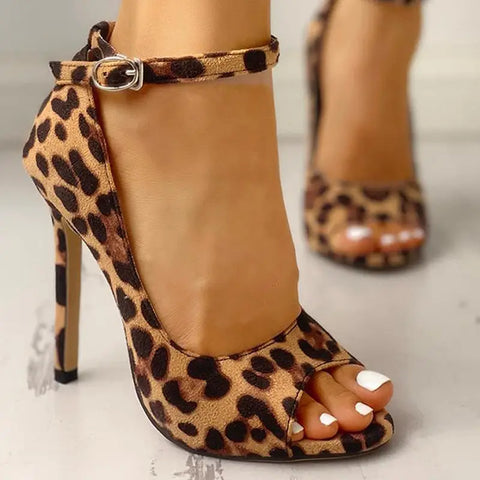
5) Snakeskin Leather Manufacturing Process
The snakeskin handbag is an elegant piece, often seen in luxury stores and on the catwalks of the world's fashion capitals.
But the journey of this coveted leather, from the snake in the wild to the window of a department store, is long. And often unpleasant. 🙁
At the base of this industry is the snake catcher. These snakemen work at night combing jungles, swamps and gardens to find interesting ophidians 👀. It is a tedious task and even in these lands it is rare to catch more than one reptile per hour.
Thanks to the intricate patterns of its skin, one of the most coveted snakes to adorn accessories is the reticulated python. It is the largest snake in the world.
Once caught, the snakes are put in a bag and then taken to the slaughterhouse to begin the skinning process.
Skin Recovery
There are many ways to kill and skin a snake. But the most common methods are cruel and raise concern among NGOs and animal rights activists.
Larger snakes (pythons, anacondas, ...) are hit on the head with a mallet and die. Their jaws are then opened and water is introduced into their bodies to make them swell, which makes it easier to peel off the skin.
But sometimes producers don't even bother to kill the animal beforehand 😠. Reports say:
"The snakes that are caught have garden hoses shoved into their mouths and are inflated with water while they are still alive to loosen the skin. They are impaled by the head, and finally the skin is torn off and the body thrown on a pile."
Tanning and Processing
Once the snakes are skinned, the skins are rolled up and sorted into piles according to their size 📏. They are then cut into strips with scissors and dried, sometimes in an oven. Snake meat is not wasted because in Asia it is believed to cure various diseases, and to stimulate virility.
Once dried, the sheets of snake skin are either sent to foreign factories 🏭, or dyed and transformed on site into leather handbags, tropéziennes, pumps, wallets, school bags and original shoe collections.
These locally made items that are then shipped overseas often command a dramatic price premium. In Indonesia, a full-grain snakeskin shoulder bag can cost 1.5 million to 3 million Indonesian rupiah ($120 to $250), but can sell for thousands of dollars in a small leather goods store in the United States.
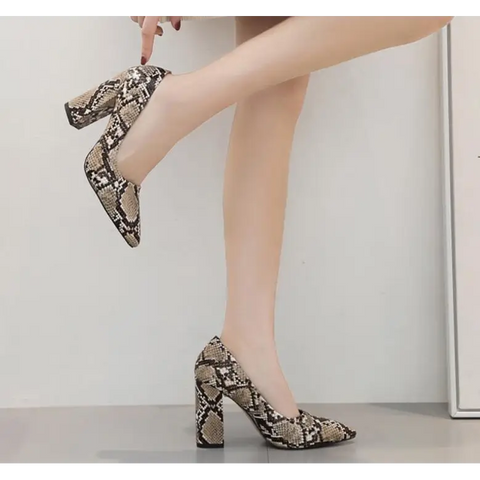
6) Smuggling and “Snake Farms
”The Explosion in Demand and Smuggling
Every year, around 500,000 snake skins are legally imported from Southeast Asia to Europe, where they are transformed into designer accessories. This total is up 40% compared to the previous decade 📈.
The European Union legally imports €700 million worth of snake skins each year. Some estimate that the illegal trade is just as significant, due to lax regulations and increasing demand.
In Asia, the scale of this smuggling trade was highlighted last year when the Chinese government seized 68,000 illegal python skins worth $48 million.
The Creation of Snake Farms, Kering's Example
The breeding of reticulated pythons and Burmese pythons is now considered unprofitable. Because the snakes take about three years to reach maturity, in addition to being difficult to care for and raise in captivity.
Faced with the very high demand for many models of snakeskin items 💵, some large multinational fashion companies have opted to create their own source of skin supply.
Kering, the luxury company that owns the brands Gucci, Saint Laurent and Alexander McQueen, among others, has built its own python farm in Thailand to raise them in "the best conditions for the animals, the farmers and the ecosystem".
The company said it was looking for other ways to source precious skins about three years ago, as part of its involvement in the Python Conservation Partnership. It hopes to reduce the illegal trade in snake skin ↘️.
Note: The snake farm shown above is not the Kering Group's.
These New Python Farms Are Supposed to Be More Ethical and Sustainable
These new snake farms claim to follow the Farmed Animal Welfare Council's recommendations to ensure the "five freedoms" for animals:
- to be free from hunger and thirst
- to be free from discomfort
- to express normal behavior
- to be free from pain, injury, and discomfort
- to be free from fear and distress
- Animal rights group Peta 🐼 recently revealed that it has purchased shares in LVMH, the fashion house that owns Louis Vuitton, Dior, and Givenchy.
And this in order to fight against what it considers to be animal rights violations. Peta has already taken stakes in Prada and Hermes as part of its campaign against the use of exotic skins, including alligator and crocodile 🐊.
Skin Tracing Is Difficult
Any major fashion designer will probably tell you that their skins are ethically sourced. 😕
Under pressure from animal rights activists, fashion brands claim to use farmed skins and work within the framework of wildlife and trade conventions. This is to ensure “sustainable and ethical” sourcing and slaughter.
However, it is not possible to trace all snakeskin products that reach store shelves. Many brands and stores do not know where the python skin comes from, due to the lack of a manufacturer’s reference 🤷♂️. Trade regulations are easily exploited and the illegal snakeskin trade is very lucrative. There are also far fewer animal protection laws for reptiles.
Commercial snake farms already exist in Southeast Asia and China. But the system is widely used to "launder" illegally captured wild pythons ⛔. So much so that most python skins from Cambodia, Indonesia and Laos are considered suspect.
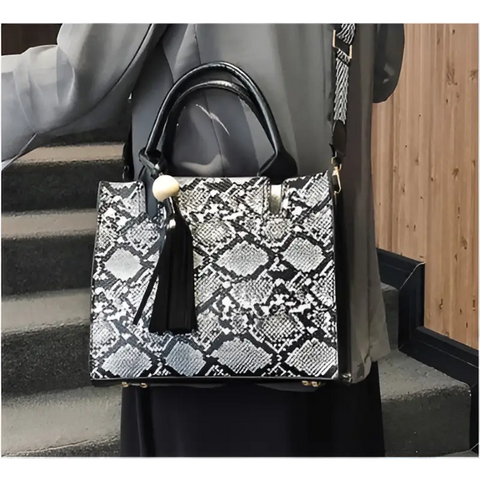
7) Ethical and Environmental Issues
By-Products of the Food Industry
Any animal product used in fashion is a by-product of the meat industry.
This is the case for faux leather: the meat of the slaughtered animal (cow, cow, sheep, beef, lamb...) is used for human consumption, and the skin is used to make items that will then be sold 💲. In Asian countries where snakes are eaten, as we have seen this is also true for reptiles.
Leather issues therefore largely concern animal welfare even if, unlike other animals, cows are never raised solely for their skins.
So it is true that the leather industry would collapse if people stopped eating meat 🥩❌. However, it should be noted that the price the farmer gets for the hide of his livestock is negligible. It is paid by weight, not by individual hide.
The Environmental Damage Caused by This Industry
Nearly 70% of the world's water supply 💧 is used for livestock, food and therefore fashion. A quarter of the Earth's surface is covered in pasture, while habitats for wildlife are becoming scarce.
This exploitation also pollutes because there is always the problem of blood, waste, silage and slurry: it has to be put somewhere.
More than 95% of the world's leather is chrome tanned. The danger is that chromium is a heavy metal ⚠️. And if it is poorly tanned and the molecules are left "loose", it can oxidize into chromium 6, which is carcinogenic.
The alternative is "vegetable tanning", which uses tree bark. But this process takes months, compared to chromium which only needs a few days to act. However, the waste from vegetable tanning includes material from carcasses, germs and bacteria.
Conclusion: Mentalities are Changing
And there you have it, the industry behind snakeskin items no longer holds any secrets for you! 🙂
Today, mentalities are changing. The general public is aware of the ethical and environmental problems linked to the production of exotic skins and leathers. New, more responsible consumption habits are emerging.
Brands like Mango, Urban Outfitters, Dorothy Perkins or Esprit Serpent 👋 produce or sell faux leather accessories that respect animals. Many large groups are now communicating about their desire for more sustainable and ethical development.
"The best way to do this is not to ban things, but to engage with the industry and help it progress in the process".
At Esprit Serpent, you will only find shoes, boots and handbags made of faux snakeskin. We are firmly committed to preserving our animal totem ❤️.
And we challenge anyone to tell the difference between our items and products made of real snakeskin. 😉
Dive into the fascinating world of snakes and explore our other articles now!
Stay Updated!
Don't miss out on the latest insights, tips, and exclusive content. Subscribe to our blog newsletter today and be the first to know about new posts, special offers, and more!
Join our community now—just enter your email below to stay connected